For best results print the cards using the Firefox Browser
Cards
(QUICK LINKS: Decks | plants | mammals | birds | | reptiles | fish | cephalopoda | insects | microbe | events
( scientist | project | modifier | technique |)

Atlantic Blue Crab
Callinectes sapidus

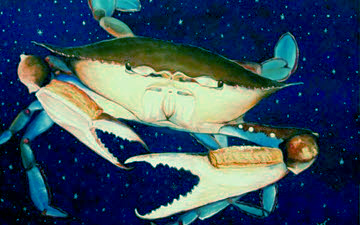
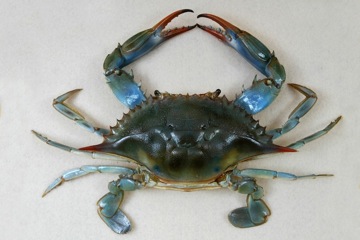
3 POINTS
• Callinectes sapidus has a MOVE of 2.
• Callinectes sapidus females have red-tipped claws.
cool, warm
Graphic by Scott Plasterscottplaster.com/
Photo by Wendy Kaveneywww.wendykaveney.com/-/wendykaveney/
Callinectes sapidus (from the Greek calli- = “beautiful”, nectes = “swimmer”, and Latin sapidus = “savory”), the Chesapeake or Atlantic blue crab, is a crustacean found in the waters of the western Atlantic Ocean, the Pacific coast of Central America and the Gulf of Mexico. On the Pacific coast of Central America it is largely ignored as a food source as picking […] read more

Axolotl
Ambystoma mexicanum

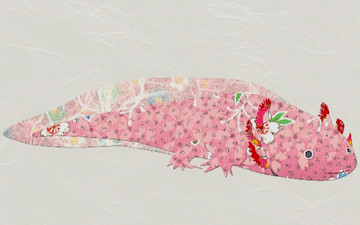
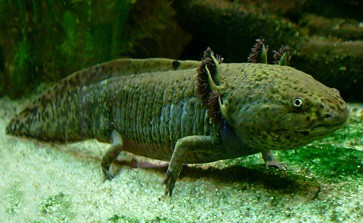
9 POINTS
• Ambystoma mexicanum has a MOVE of 2.
• Ambystoma mexicanum can regenerate its limbs.
Warm
Graphic by Yukiko Fujiwarawww.cdb.riken.go.jp/en/05_development/0506_piccard05.html
Photo by LoKiLeChcommons.wikimedia.org/wiki/User:Kolling
The axolotl ( /ˈæksəlɒtəl/), Ambystoma mexicanum, is a neotenic mole salamander belonging to the Tiger Salamander complex.[citation needed] Larvae of this species fail to undergo metamorphosis, so the adults remain aquatic and gilled. The species originates from Lake Texcoco underlying Mexico City and is also called ajolote (which is also the common name for the Mexican Mole Lizard). Axolotls are used extensively in scientific […] read more

Fire Salamander
Salamandra salamandra

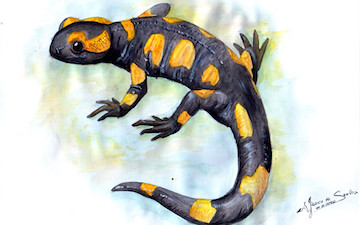

7 POINTS
• Salamandra salamandra has a MOVE of 2.
• Salamandra salamandra can spray neurotoxic chemicals at attacking predators.
Cool, Warm
Graphic by Klaudia Blicharskajigoku-no-son.deviantart.com/
Photo by Orchicommons.wikimedia.org/wiki/User:Orchi
The fire salamander (Salamandra salamandra) is probably the best-known salamander species in Europe. It is black with yellow spots or stripes to a varying degree; some specimens can be nearly completely black while on others the yellow is dominant. Shades of red and orange may sometimes appear, either replacing or mixing with the yellow according to subspecies. Fire […] read more

Luzon Bleeding-heart
Gallicolumba luzonica

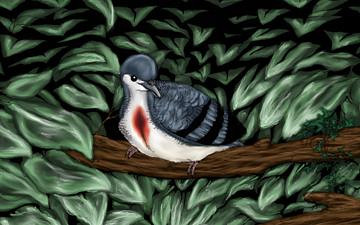
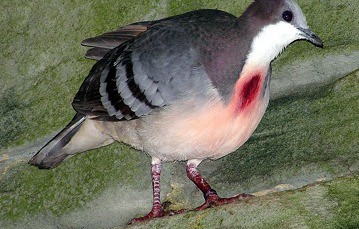
4 POINTS
• Gallicolumba luzonica has a FLIGHT of 2.
• Gallicolumba luzonica has a dark red patch on its breast that looks like a bleeding wound.
Warm, Hot
Graphic by Heather E. Harlowforbidding.deviantart.com/
Photo by Adrian Pingstonecommons.wikimedia.org/wiki/User:Arpingstone
The Luzon Bleeding-heart (Gallicolumba luzonica) is one of a number of species of ground dove in the genus Gallicolumba that are called “bleeding-hearts”. They get this name from a splash of vivid red colour at the centre of their white breasts. The Luzon Bleeding-heart is the species in which this feature is most pronounced, and on first sight […] read more

Spotted Hyena
Crocuta crocuta


Sorry, there is no photo available. If you have one, please submit
here
.
6 POINTS
• Crocuta crocuta has a MOVE of 2.
• Hyenas both hunt and scavenge. Nearly 70% of their meals are direct kills.
Warm, Hot
Graphic by Anne Henselanatoliba.deviantart.com/
The spotted hyena (Crocuta crocuta) also known as laughing hyena, is a carnivorous mammal of the family Hyaenidae, of which it is the largest extant member. Though the species’ prehistoric range included Eurasia extending from Atlantic Europe to China,[3] it now only occurs in all of Africa south of the Sahara save for the Congo […] read more

Pineapple Fish
Cleidopus gloriamaris

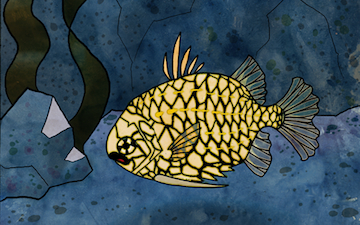
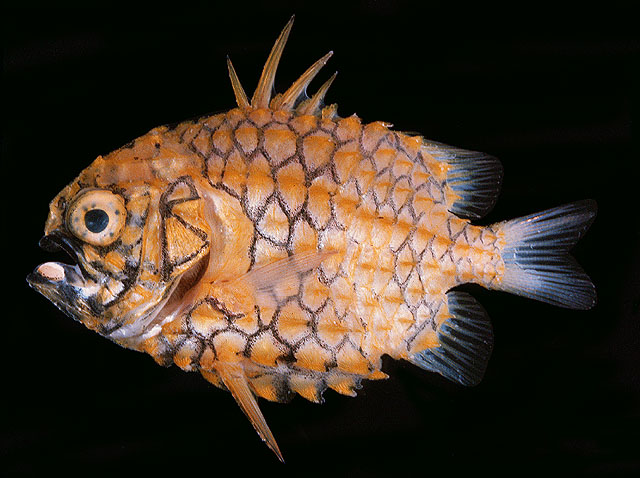
5 POINTS
• Cleidopus gloriamaris has a MOVE of 2.
• Cleidopus gloriamaris is sometimes called a knightfish because of its armor-like scales.
Warm
Graphic by Adam Smithrupted.deviantart.com/
Photo by Randall, J.E. www.fishbase.org/collaborators/CollaboratorSummary.php?id=50
The pineapplefish, Cleidopus gloriamaris, is a species of fish in the family Monocentridae, and the sole member of its genus. It is also known as the knightfish or the coat-of-mail fish, due to the armor-like scales covering its body, and the port-and-starboard light fish, as it has a pair of bioluminescent organs that are reminiscent of navigation lights on ships.[1] Its specific […] read more